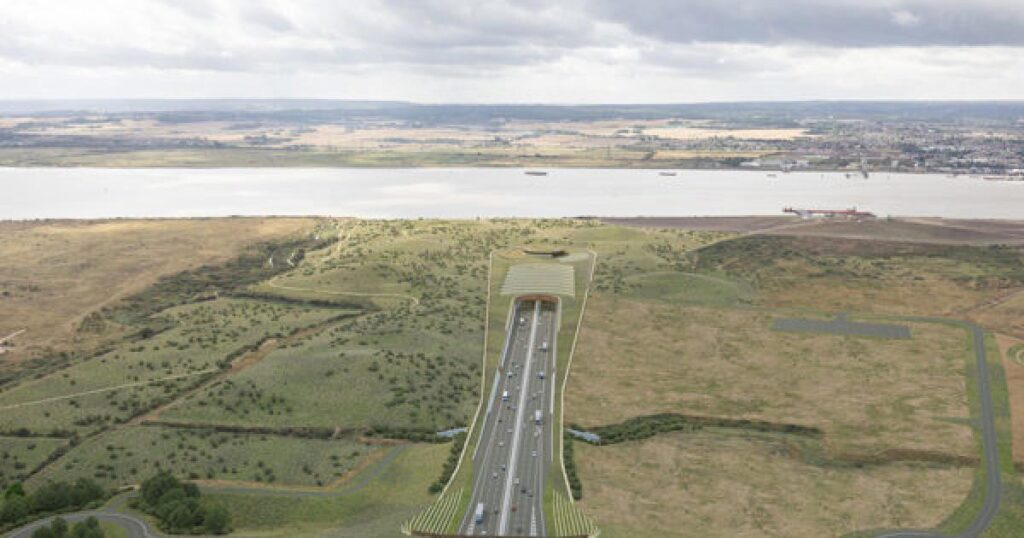The National Highways project, described as the most significant road project in a generation, aims to alleviate long-standing congestion at Dartford and improve connectivity between the south east, the Midlands, and the north.
The Lower Thames Crossing will be a 14-mile new A-road linking the A2 in Kent with the A13 and M25 in Essex through the longest road tunnel in the UK.
It is expected to ease congestion at Dartford by almost doubling road capacity across the Thames east of London, making tens of millions of journeys quicker, safer, and more reliable every year.
Construction could start as early as 2026, with the new road expected to open in the early 2030s.
The government is currently exploring private finance options for the project.
The National Highways project is the first in a new generation of projects that will accelerate the construction industry’s move to net zero by using fuels such as hydrogen to power its construction fleet and only using low-carbon concrete and steel.
This approach to carbon has cut the project’s estimated construction footprint by around half so far, with a target to achieve a 70 per cent reduction.
The project will also restore nature across Kent and Essex by delivering six times more green space than road.
Plans include one million additional trees, a new community woodland, and two new public parks overlooking the Thames.
The project will also encourage active travel across the area by providing almost three miles of new or improved routes for walkers, cyclists, or horse riders for every mile of new road.
The design of the new road was developed following a comprehensive programme of consultation with the local community and a range of organisations.
Improvements made following feedback include future-proofing it with three lanes in each direction along most of the route, reducing the impact on ancient woodland by 70 per cent, and increasing the length of the tunnel to reduce impacts on local communities and the environment.
Matt Palmer, National Highways Executive Director Lower Thames Crossing, said: “The Lower Thames Crossing is one of the UK’s most important infrastructure projects.
“It will unlock growth with quicker, safer, and more reliable journeys and redraw the blueprint for building major projects in a net zero future by scaling up the use of low-carbon construction, and leaving a legacy of green spaces, green skills.
“Our plans have been shaped by the local community and refined by robust and rigorous examination from independent experts.
“We are more committed than ever to working with our neighbours to build the crossing in a way that offers them opportunities to work and learn new skills while reducing impacts.
“We are shovel ready and have our delivery partners on board, and today’s decision allows us to work with government on funding and start the detailed planning that will let us start construction as soon as possible.”
During construction, the project will give a boost to British jobs and skills by working with specialist suppliers from across the UK, and will employ almost half of its workforce locally, training them to build the Lower Thames Crossing and equipping them with the skills to take on future projects.
Before main construction gets underway, the project and its three delivery partners will work with local authorities, landowners, and stakeholders to refine aspects of the design to further reduce the impact of construction on the local community and environment, and embed new and emerging low carbon technologies and materials.
Over the coming months, they will also carry out archaeological, ecological, and topographical surveys, as well as further ground investigations to prepare the detailed design and construction plans.




